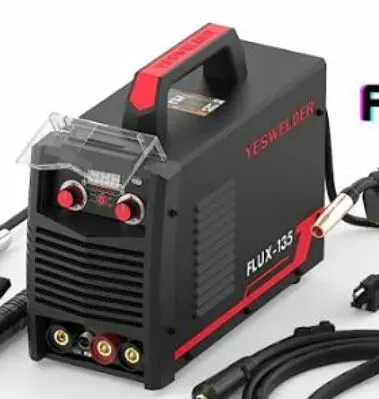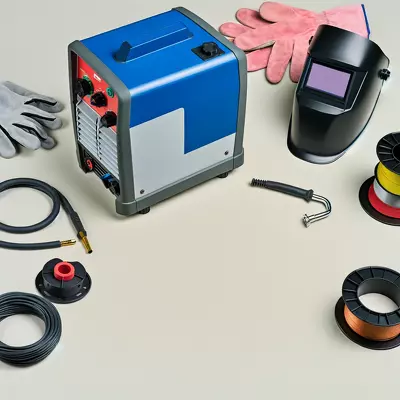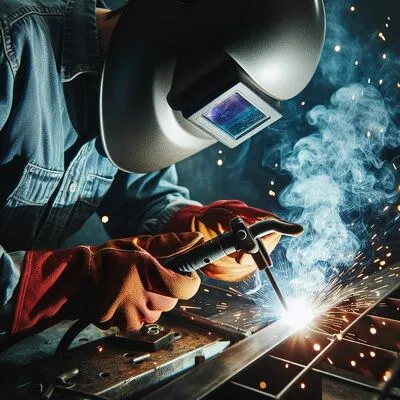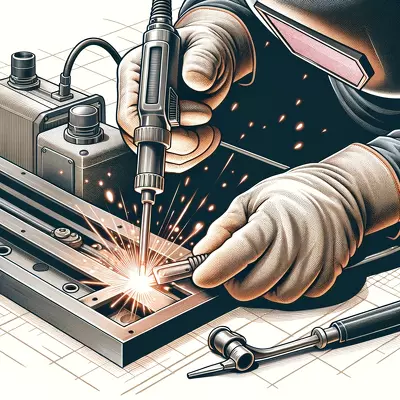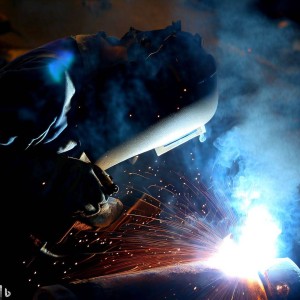From Sparks to Mastery: Choosing the Best Welding Method for Newbies

Welding is a skill that combines art and science, offering a gateway to numerous projects and careers. For beginners, navigating the array of welding types can be overwhelming. Identifying the best type of welding for beginners is crucial for a smooth learning curve, ensuring newcomers can practice safely while gradually improving their proficiency. This guide aims to simplify that choice, focusing on techniques that balance ease of learning with practical application.
I. Introduction
A. Importance of Choosing the Right Welding Type for Beginners
Embarking on the journey of learning welding is an exciting venture that offers endless possibilities. For beginners, the initial step involves selecting the appropriate welding method, which is pivotal for fostering a solid foundation in this craft. The right choice not only facilitates a smoother learning experience but also ensures safety and efficiency. This section explores why novices need to start with the most suitable welding technique.
B. Overview of Common Welding Methods
Welding encompasses various techniques, each with its unique applications, benefits, and learning curves. The primary methods include MIG (Metal Inert Gas) Welding, TIG (Tungsten Inert Gas) Welding, and Stick Welding (Shielded Metal Arc Welding). Understanding these common practices provides a baseline for beginners to decide which path to embark on in their welding journey.
II. Factors to Consider When Choosing a Welding Type
A. Learning Curve and Accessibility
One of the first considerations for beginners is the complexity of the welding process. Some methods are more forgiving and easier to pick up than others, making them ideal for beginners. Accessibility to learning resources and community support also plays a crucial role in a beginner’s success.
B. Equipment and Material Costs
The initial investment in welding equipment and materials can vary significantly between different welding types. Beginners must weigh the cost implications of each method against their budget and goals. Opting for a technique that requires minimal investment can lower barriers to entry.
C. Safety Considerations
Safety is paramount in welding, given the inherent risks involved in the process. Beginners should consider the safety measures associated with each type of welding. Understanding and mitigating these risks from the outset is essential for a safe learning environment.
III. Best Types of Welding for Beginners
A. MIG (Metal Inert Gas) Welding
- Advantages of MIG Welding for Beginners
MIG welding stands out for its simplicity and versatility, making it an excellent starting point for novices. This section delves into its benefits, such as its straightforward technique and wide range of applications. - Basic Equipment Needed
An overview of the essential MIG welding equipment helps beginners understand what is necessary to get started. This includes the welding machine, wire, gas supply, and protective gear. - Safety Tips
Safety precautions specific to MIG welding are crucial for beginners. This includes proper ventilation, use of protective clothing, and handling of equipment to prevent accidents.
B. TIG (Tungsten Inert Gas) Welding
- Advantages of TIG Welding for Beginners
Though TIG welding is more complex, it offers precision and control that can be beneficial for beginners interested in high-quality welds. This section highlights the reasons why TIG welding is worth considering for those willing to tackle a steeper learning curve. - Basic Equipment Needed
The necessary equipment for TIG welding, including the TIG torch, power source, and shielding gas, is outlined here. Understanding these requirements is key for beginners preparing to engage in TIG welding. - Safety Tips
This section addresses the safety aspects of TIG welding and provides guidelines on protective measures to ensure a safe welding process. It focuses on eye protection, proper ventilation, and torch handling.
C. Stick Welding (Shielded Metal Arc Welding)
- Advantages of Stick Welding for Beginners
Stick welding is renowned for its robustness and suitability for outdoor use. It offers a practical entry point for beginners, especially those interested in projects that require welding in various environments. - Basic Equipment Needed
This segment covers the fundamental stick welding equipment, such as the electrode holder, electrodes, and welding machine, guiding beginners on what to invest in initially. - Safety Tips
Emphasizing the safety protocols for stick welding, including the use of appropriate gloves, helmets, and protective clothing, ensures beginners are well-informed about how to avoid potential hazards.
IV. FAQs
Q: What is the easiest welding method for beginners to learn?
A: MIG welding is often considered the easiest for beginners due to its straightforward technique and minimal equipment requirements.
Q: How much does it cost to start welding as a hobby?
A: Starting costs can vary, but for MIG welding, beginners can expect to spend around $500 to $1,000 on equipment and materials.
Q: Can welding be self-taught, or are classes necessary?
A: While many welders start by teaching themselves, attending classes can accelerate learning and improve technique.
Q: What are the safety risks of welding, and how can they be minimized?
A: Risks include burns, eye damage, and inhalation of fumes. These can be minimized with proper protective gear, ventilation, and adherence to safety guidelines.
Q: How long does it take to become proficient in welding?
A: Proficiency can be achieved in a few months of consistent practice, though mastery of more complex techniques may take longer.
Q: Is online learning effective for welding?
A: While online resources can be highly beneficial for learning theory and techniques, hands-on practice is essential for skill development.
Q: What are some affordable MIG welders for beginners?
A: There are several budget-friendly MIG welders available that are suitable for beginners, offering a balance between quality, ease of use, and affordability.
V. Conclusion
A. Summary of Recommended Welding Types for Beginners
This article has explored the best types of welding for beginners, highlighting MIG, TIG, and Stick welding as favorable starting points. Each method offers unique advantages and considerations, from ease of learning to equipment costs and safety measures.
B. Encouragement for Continuous Learning and Practice
The journey to becoming a skilled welder is continuous, requiring dedication, practice, and a willingness to learn. Beginners are encouraged to explore different welding techniques, seek out additional learning resources, and engage with the welding community to enhance their skills.
VI. Suggested Readings
Enriching your knowledge through literature can be immensely beneficial before embarking on your welding journey. The following books are recommended for their comprehensive coverage of welding techniques, safety practices, and project ideas, serving as excellent resources for beginners and experienced welders alike.
- “Welding For Dummies” – This book offers a straightforward introduction to welding, covering various techniques and providing practical advice for beginners.
- “The Welder’s Handbook: A Complete Guide to MIG, TIG, Arc & Oxyacetylene Welding” is an in-depth guide that explores different welding methods, equipment, and safety tips. It is ideal for those seeking to expand their welding knowledge.
- “Modern Welding” – A comprehensive textbook that covers all aspects of welding, from the basics to advanced techniques, making it a valuable resource for both students and professionals.
These books serve as a solid foundation for anyone looking to start or improve their welding skills. By delving into these suggested readings, beginners can gain a deeper understanding of the art and science of welding, fostering a more informed and skilled approach to their practice.

